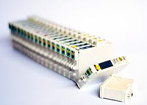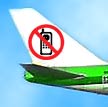 Wireless network manufacturers are promising that a new standard will end Wi-Fi compatibility problems and other headaches. With the announcement of the 802.11n draft 2.0 standard today, the industry appears to be reaching out to disillusioned consumers.
Wireless network manufacturers are promising that a new standard will end Wi-Fi compatibility problems and other headaches. With the announcement of the 802.11n draft 2.0 standard today, the industry appears to be reaching out to disillusioned consumers.
“[This will] end the practice of uncertain claims of Wi-Fi draft compliance by independent vendors," said Ken Dulaney, a vice president at Gartner Research. "Consumers can now purchase products with improved performance and be assured of interoperability."
Products supporting the draft 2.0 standard will be on store shelves by the end of June, according to the Wi-Fi Alliance, which represents wireless product manufacturers.
Years of delays
Years of delays in introducing the final high-speed 802.11n wireless standard have cost the industry tens of millions of dollars and much public goodwill, analysts say. Almost 80 percent of US Wi-Fi users are dissatisfied with current products, the industry's own research shows.
“Much of the growth of the Wi-Fi industry hinges on the successful uptake of 802.11n products by both consumers and enterprises,” comments Stan Schatt, networking research director at ABI Research.
Shoppers confused
However, “sales of draft IEEE 802.11n products have been below both manufacturers’ and retailers’ expectations,” according to ABI analysts, who have criticized the industry for confusing consumers.
ABI analysts, who have criticized the industry for confusing consumers.
The current generation of so-called 'pre-N' wireless routers and other products do not provide full compatibility between products from different manufacturers. They also offer no guarantee that they will be able to connect to future products. Consumers say they are confused by the differences between the products available. Corporate customers are particularly concerned about the unfinished nature of the 802.11n standards, and compatibility with future products.
The final 802.11n standard will have a theoretical maximum bandwidth, or physical layer speed, of around 300 megabits per second. The actual real world data transfer rate is expected to reach approximately 120 Mbps - at least 5 times faster than the actual speeds of current generation, (802.11g) wireless products
Wi-Fi Alliance announcement
Industry body, the Wi-Fi Alliance announced today that chips from seven of its member companies have been certified compatible with the draft 2.0 standard. Products will be in stores by the end of June, according to the announcement
As part of its marketing drive, the Wi-Fi Alliance turned to Kelton Research, a market research firm which admits it designs customer surveys to generate the headlines that clients require. According to the Alliance, Kelton's survey showed that 78 percent of US Wi-Fi users were interested in upgrading their Wi-Fi systems to improve range or throughput.
The Draft 1.0 802.11n specification was released in early 2006. “IEEE 802.11n Draft 2.0 chipsets will be extremely similar to the final version of 802.11n.”, predicted ABI research principal analyst, Phil Solis late last year.
Leading Wi-Fi vendors with products which use one of the 802.11n draft standards or pseudo-standards include Linksys, Netgear, Belkin, D-Link, and Buffalo. Chip makers include Broadcom, Intel, Atheros, and Marvell.










what annoys me is that
what annoys me is that wireless is totally useless for playing video. After all the bullsh*t about the connected media centre home. I tried for weeks to get wireless reliable enough to stream video, that's when I found out how rubbish the bandwidth really was. 54mbps is really 15mbps, ans windows loses the file handle when the connection drops. Homeplug FTW!